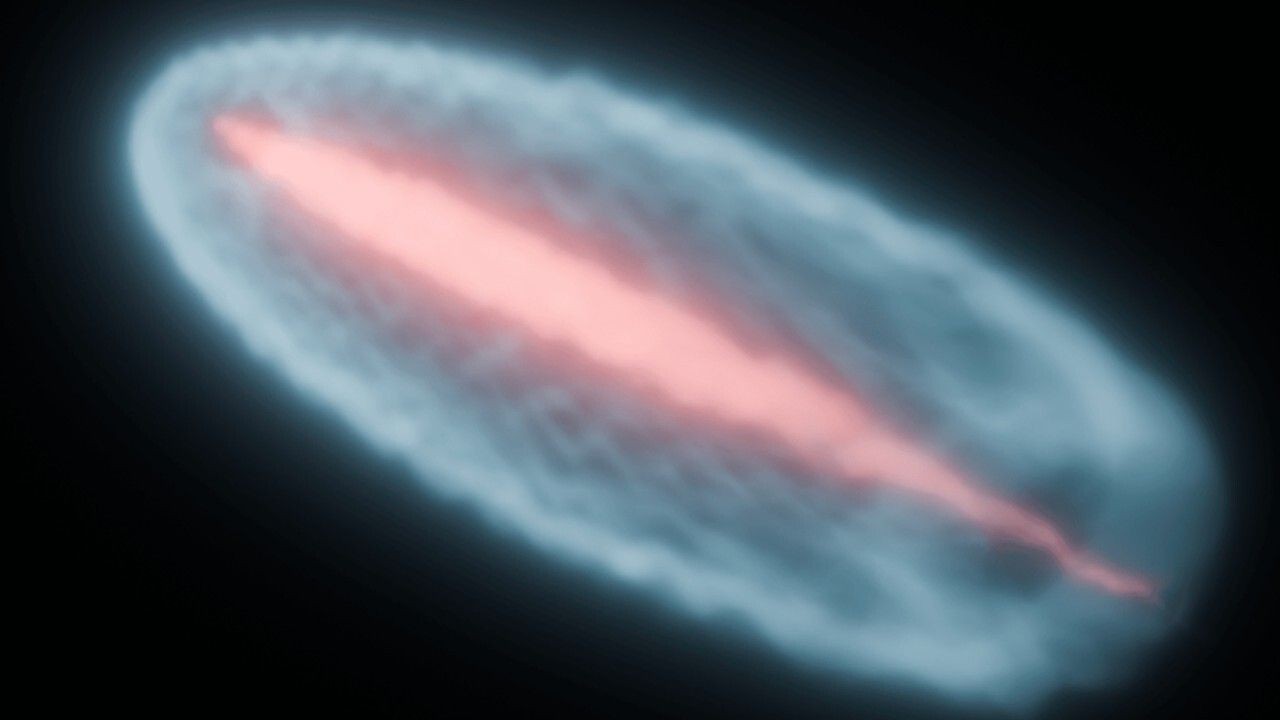Scientists have successfully recreated conditions resembling “cosmic fireballs” within the CERN particle accelerator, a groundbreaking experiment aimed at understanding the enigmatic disappearance of high-energy gamma rays from distant galaxies. This achievement could unlock crucial insights into the origin of magnetic fields in intergalactic space and the behavior of matter under extreme conditions.
Simulating Extreme Universe Conditions
The research, conducted by scientists from the University of Oxford and the Science and Technology Facilities Council’s (STFC) Central Laser Facility, utilized CERN’s HiRadMat facility and the Super Proton Synchrotron to generate pairs of matter and antimatter particles (electrons and positrons). These particles were then blasted through a column of plasma – a superheated, ionized gas – simulating the intense conditions found in jets emanating from blazars. Blazars are a type of active galactic nucleus, where supermassive black holes at the centers of galaxies consume matter and eject high-energy plasma streams.
“These experiments demonstrate how laboratory astrophysics can test theories of the high-energy universe,” explained Bob Bingham, a team member from the University of Strathclyde. “By reproducing relativistic plasma conditions in the lab, we can measure processes that shape the evolution of cosmic jets and better understand the origin of magnetic fields in intergalactic space.”
What are Blazars, and Why Do Gamma Rays Vanish?
Blazars are a fascinating subset of “active galactic nuclei” (AGN). At the heart of these galaxies lies a supermassive black hole—millions or billions of times more massive than our sun—voraciously pulling in surrounding gas and dust. This material forms a swirling disk, called an accretion disk, that glows brightly due to friction.
As matter falls towards the black hole, powerful magnetic fields channel some of it towards the black hole’s poles. This matter is accelerated to nearly the speed of light and expelled as twin jets of plasma. When one of these jets happens to be pointed directly toward Earth, it becomes a blazar. These jets produce intense gamma-ray radiation that telescopes on Earth can detect.
However, a puzzling phenomenon has emerged: when these gamma rays travel through intergalactic space, they don’s always produce the secondary signals predicted by standard physics. Scientists anticipated that interactions with photons in the cosmic background light would create pairs of electrons and positrons (matter and antimatter), and these pairs, in turn, should scatter off the cosmic microwave background (CMB), a faint afterglow of the Big Bang. This scattering should generate lower-energy gamma rays detectable by telescopes like the Fermi spacecraft. Yet, these lower-energy gamma rays consistently elude detection.
The Missing Gamma-Ray Mystery: Explanations and New Findings
Several theories attempt to explain this apparent discrepancy. One suggestion is that weak intergalactic magnetic fields deflect the electron-positron pairs, effectively pushing the lower-energy gamma rays out of our line of sight. Another possibility involves instability in these matter-antimatter pairs as they traverse the sparse matter between galaxies, causing fluctuations in the plasma jet and generating magnetic fields that dissipate the beam’s energy. Finally, the presence of a “relic magnetic field,” leftover from the early universe, could be scrambling the gamma rays.
The recent CERN experiment was designed to test the first two of these theories. Surprisingly, the team observed minimal disruption to the plasma beam, contradicting the expectation of significant magnetic field generation. This suggests that plasma instabilities might be too weak to account for the missing gamma rays, bolstering the possibility of a relic magnetic field influencing their behavior.
The team’s findings challenge prevailing theories and strengthen the argument for the existence of a relic magnetic field permeating the intergalactic medium.
Looking Ahead
The results raise intriguing questions, particularly concerning how such a relic magnetic field could have originated in the remarkably uniform early universe. Answering this question might necessitate exploring physics beyond the Standard Model, potentially involving advanced facilities like the Cherenkov Telescope Array Observatory (CTAO).
“It was a lot of fun to be part of an innovative experiment like this that adds a novel dimension to the frontier research being done at CERN,” concluded Subir Sarkar, team member and University of Oxford researcher. The team’s findings, published in the journal PNAS, offer a fresh perspective on fundamental cosmic questions and highlight the potential of laboratory experiments to probe the universe’s most extreme environments.
